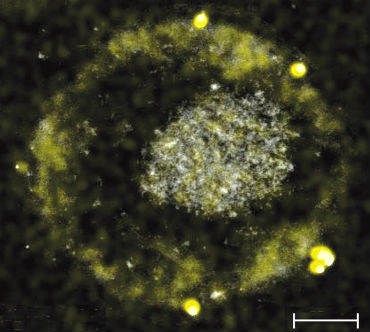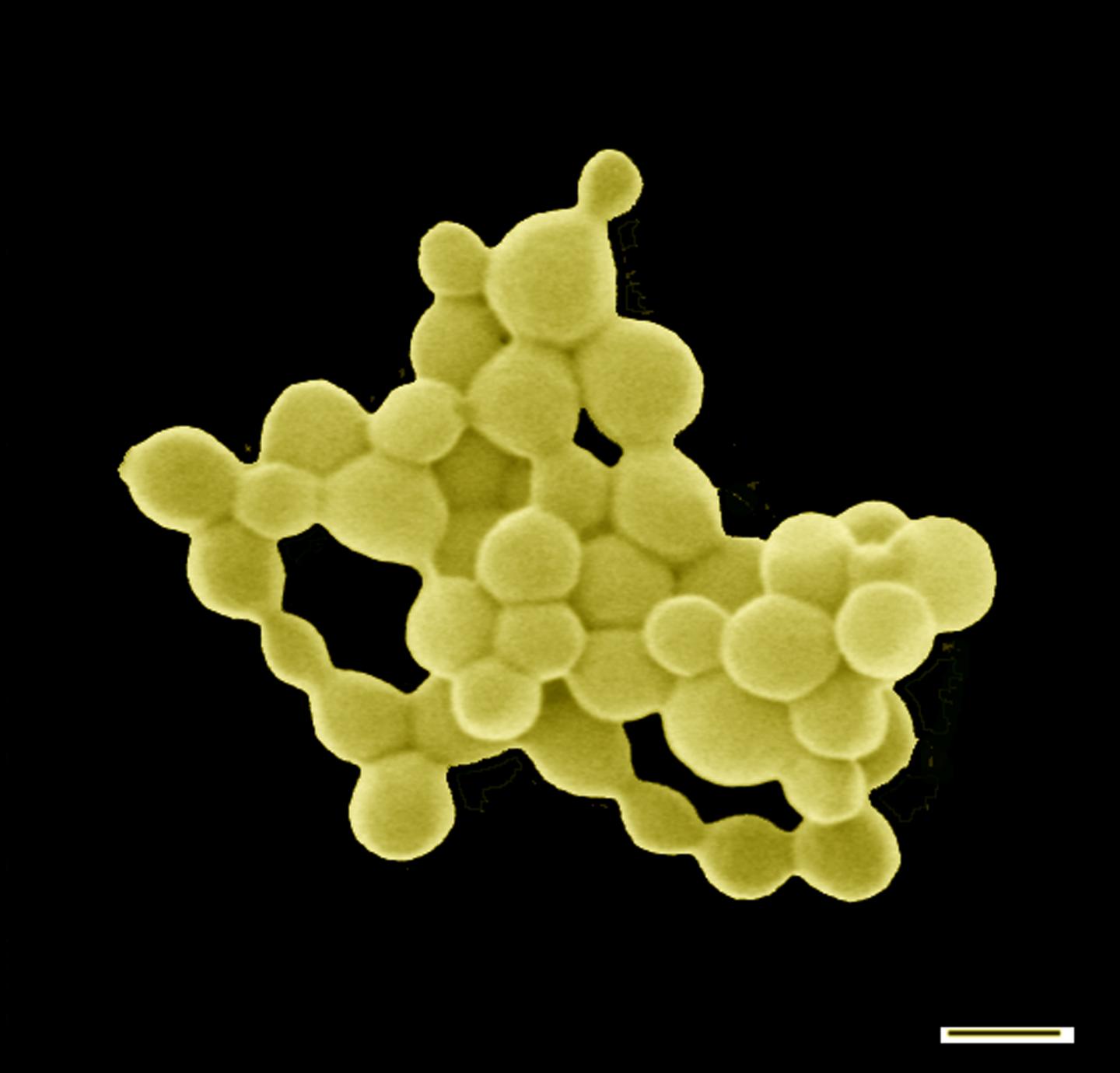|
NOVIDADES
High concentrations of heavy metals, like copper and gold, are toxic for most living creatures. This is not the case for the bacterium C. metallidurans, which has found a way to extract valuable trace elements from a compound of heavy metals without poisoning itself. One interesting side-effect: the formation of tiny gold nuggets. A team of researchers from Martin Luther University Halle-Wittenberg (MLU), the Technical University of Munich (TUM) and the University of Adelaide in Australia has discovered the molecular processes that take place inside the bacteria. The group presented their findings in the renowned journal Metallomics published by the Royal Society of Chemistry.  C. metallidurans can produce small gold nuggets. Image Credit: American Society for Microbiology
 Another image of the tiny gold nuggets. Image Credit: Technical University of Munich
When too much copper has accumulated inside the bacteria, it is normally pumped out by the enzyme CupA. "However, when gold compounds are also present, the enzyme is supressed and the toxic copper and gold compounds remain inside the cell. Copper and gold combined are actually more toxic than when they appear on their own," says Dietrich H. Nies. To solve this problem, the bacteria activate another enzyme - CopA. This enzyme transforms the copper and gold compounds into their originally difficult to absorb forms. "This assures that fewer copper and gold compounds enter the cellular interior. The bacterium is poisoned less and the enzyme that pumps out the copper can dispose of the excess copper unimpeded. Another consequence: the gold compounds that are difficult to absorb transform in the outer area of the cell into harmless gold nuggets only a few nanometres in size," says Nies. In nature, C. metalliduran plays a key role in the formation of so-called secondary gold, which emerges following the breakdown of primary, geologically created, ancient gold ores. It transforms the toxic gold particles formed by the weathering process into harmless gold particles, thereby producing gold nuggets. The study conducted by the joint German-Australian research team provides important insights into the second half of the bio-geochemical gold cycle. Here primary gold metal is transformed by other bacteria into mobile, toxic gold compounds, which is transformed back into secondary metallic gold in the second half of the cycle. Once the entire cycle is understood, gold can also be produced from ores containing only a small percentage of gold without requiring toxic mercury bonds as was previously the case. By Martin-Luther University Halle-Wittenberg. Posted: Feb 01, 2018. |
|||||||||||||||||||||||||